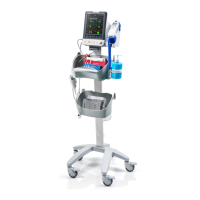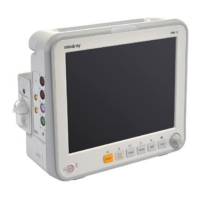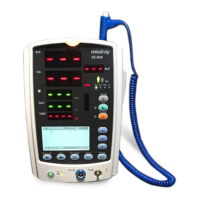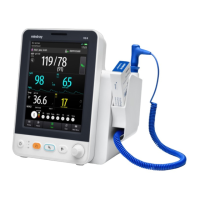The Basics
2-6
1. AC Power Input
2. USB Connectors
They connect such devices as the USB mice, USB keyboard, etc.
3. Auxiliary Output Connector
It provides analog signals if an oscilloscope is connected or alarm signals if a nurse
call system is connected.
4. Defib Sync Connector
It provides synchronization signals if a defibrillator is connected.
5. Network Connector
It is a standard RJ45 connector that connects the patient monitor to the CMS.
6. CIS Connector
It is a standard RJ45 connector that connects the patient monitor to the hospital’s
clinical information system (CIS). The CIS feature is available in China only.
7. USB Connectors
They connect the controlling devices (USB mice and USB keyboard) of the secondary
display.
8. Digital Video Interface (DVI)
It connects a standard digital video display.
9. SMR Connector
It connects the satellite module rack (SMR).
10. Equipotential Grounding Terminal
When the patient monitor and other devices are to be used together, their equipotential
grounding terminals should be connected together, eliminating the potential difference
between them.
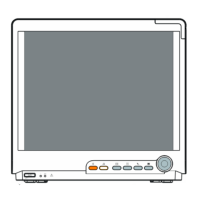
